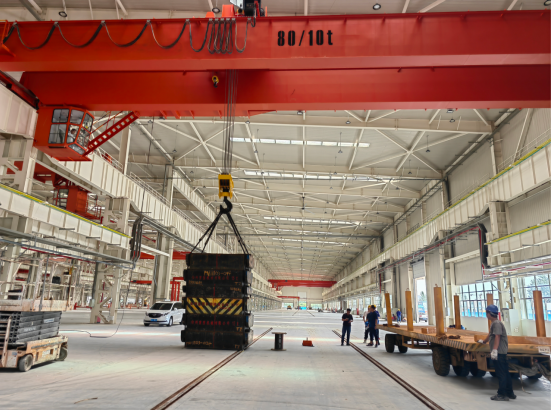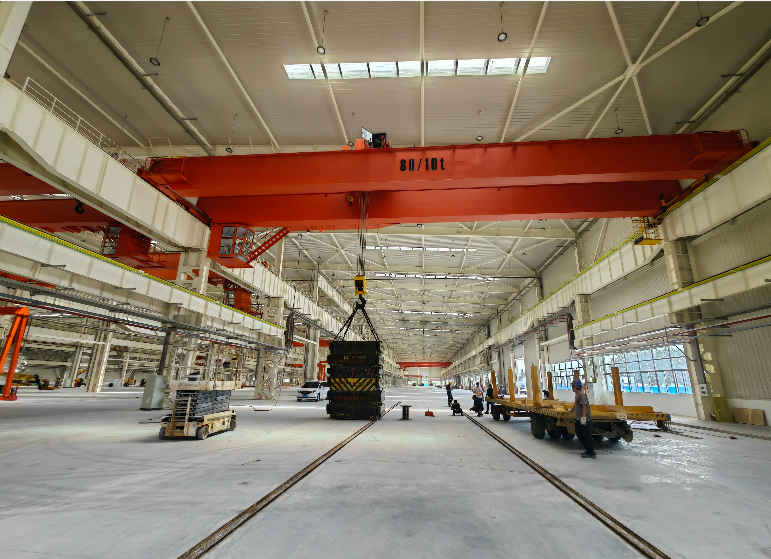The following points must be observed when using a overhead crane
A bridge crane is a mechanical device that is horizontally mounted above a workshop, warehouse, or open-air storage yard and used to lift various objects. It is usually called a "crane" or "traveling crane". It is the most widely used type of lifting machinery in the mechanical, metallurgical, and chemical industries. In modern industrial enterprises, it is one of the important equipment for realizing the mechanization and automation of the production process, reducing heavy manual labor, and improving production efficiency.

When using a bridge crane, pay attention to the following safety precautions:
1. The crane must be in normal condition, especially the safety devices, such as brake mechanism, sound and light, signal, interlocking device, etc. must be sensitive and intact.
2. The operator must concentrate during the work. Before lifting, run it idle first, then lift it. The lifting object should be 100-150mms off the ground. If the lifting object is not tied tightly, it should be tied again. The signal bell should be sounded before driving; the lifting object must not pass over the head of the person. When the crane is started, it is strictly forbidden to repair, inspect, refuel and wipe the machine parts. If a fault is found during operation, the crane must be stopped immediately.
3. When the work is terminated, the crane should be stopped on the parking line, the hook should be raised to the position, and no heavy objects should be hung on the hook. Put all controllers and joysticks to zero position, pull off the power switch, and lock the cab door.

4. Bridge cranes must be equipped with reliable and sensitive safety devices. Generally, there are buffers, limiters (travel limiters, lifting limiters), lifting limiters, windproof rail clamps, etc.
5. The outer shell of all live parts of the crane should be reliably grounded to avoid accidental electric shock to the operator. When the trolley track is not welded to the main beam, welding grounding should also be adopted, and the step-down transformer should be grounded on the low-voltage side as required.
6. Bridge cranes shall not be used for lifting in the following circumstances:
(1) There is no one to command or the command signal is incorrect.
(2) The driving equipment is defective or the safety device fails.
(3) Overload lifting or the quality of the equipment is unclear.
(4) People stand on or under the lifting object and are lifted by the crane hook.
(5) The light is dim and the object cannot be seen clearly.
(6) The lifting object is swaying or has sharp edges or is tilted and lifted, and no safety measures are taken.

